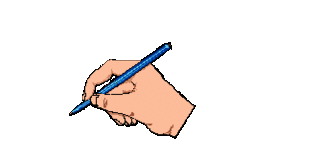Comics for the elite: Today's target market
The same study further described the average komiks reader as a married adult with some high school or college education. Only four out of ten readers were 19 years old and below.
This low income C and D mass readership base was colloquially known as the achetype "bakya" crowd conjuring the typecast image of simple-minded and less descriminating countryfolk who characteristically wore clogs (or shoes with thick wooden soles). This readership however, possessed the collective purchasing power of Php 12 million per annum in 1978, later increasing to Php 18 million per annum in 1989.
Publishing komiks for a low-income audience was an editorial policy started in 1947 by the komiks publishing monopoly of Don Ramon Roces through his ACE Publications and later through his two daughters' family's ATLAS-GASI publishing monopoly. It became an industry-wide standard when other minor komiks publishing companies followed suit. Publish komiks in cheap pulp paper and in great volume while at the same time reducing production costs (which meant measly pay for the majority of comics artists and writers) in order to gain profit.
This policy however was seriously challenged when komiks sales began to dip in 1990. The decline in sales figures became significant in 1991 with the Mt. Pinatubo eruption that not only dislocated a great number of families and readers in the Northern Luzon area (even the U.S. military bases in Clark and Subic were rendered inoperable because of the tremendous lahar and ashfall) but the disaster disrupted as well the general economic activity of the area. There was a consequent migration of homeless families to urban areas in Manila and other places. This contributed to the aggravation of poverty incidence at the time. With more destitutes and unemployed individuals, accompanied by the East Asia currency crisis of 1997, the income gap between the rich and the poor in the country grew. The rich few got richer and the poor majority got poorer. This impelled the progressive reduction of the country's middle class causing them to migrate abroad and find greener pastures as Overseas Filipino Workers (OFWs).
These major social developments of the 1990s most definitely caused a reduction in the purchasing power of the traditional and mass-based C, D and E komiks readership. With a reduction in purchasing power, there resulted a corresponding decline in komiks sales. The Atlas-GASI publishing monopoly for the first time faced real trouble. Its komiks titles and business soon dwindled as its "sister" komiks publishing corporations ceased operations one by one culminating in Atlas being sold in 1996 to the owners of National Bookstore. By this time, the measly few komiks titles being sold in the banketa or sidewalk newstands and street kiosks were priced at a high Php 15.00 mark up, too expensive for the old target market who were now being converted into "globalized" patrons of cheaper, competing media such as cable television, video, computer games, radio, cellfones and later, the internet.
Faced with rising prices and costs of production, (not to mention distribution) the daring komiks publisher of today faces a very daunting task if he quixotically attempts to sell his product to the old C, D, and E target market. This old market, though economically challenged with reduced purchasing power have now become globalized patrons of other cheaper, more accessible entertainment media such as the internet, computer games, pirated dvds, cellfones, cable, radio, and television.
Since purchasing power for print publications is now concentrated on the class A and B demographic, i.e., the elite rich and urbane few, they are now the new target market of today's local comics publishing companies. This new market is not the "bakya" crowd of yesteryear. Most of them lead a sheltered, escapist lifestyle away from the bleak, downtrodden world of the class C, D and E readership. Conditioned or more "globalized" to prefer quality products that are American, Japanese (or some other nationality) they perceive themselves as discriminating in taste and preference.
True enough, the few and expensive comics titles published today in a few thousand commercial quantities cater to this elite A and B readership. Titles such as those published by Mango Comics, Culture Crash, Ignition, Questor, and the licensed foreign comics titles of Psicom (i.e., DC Kids, Batman, Teen Titans, Justice League, etc.) Summit (W.i.t.c.h.), the faithful reprints of japanese manga, and most importantly, the more popular and imported foreign comicbooks sold at the two remaining comics specialty shops of FILBAR's and COMIC QUEST, more than proves this point. National Bookstore's "Atlas Publishing Co." even acknowledges this trend by publishing their own "W.i.t.c.h." comics imitation: "Charm".

4 Comments:
hehehe...palakihan naman ng font. di ko masyado mabasa ang entries
12:21 PM
Hello!
Just found your site from Elbert's blog. And I also noticed that someone Googled "pinoy komix biz" and ended up in my blog. (That must have been you?)
Just wanted to say welcome and that it's great to have another blogger talk about Pinoy komix! :)
8:12 PM
hello budjette :)
I definitely visited Elbert's blog and posted an invitation to him. Am not that well versed yet in computers and this blogging thing is very new to me. I don't recall (or understand) "googling" pinoykomix bix with it ending up in your blog. I didn't do it :) maybe Elbert did it?
Anyway, thanks for the comment. I've read your blog before and was interested in some of the entries. Thanks again. :)
A.I.
9:03 PM
Wow! Bagong blog about komiks. Nice.
5:37 PM
Post a Comment
<< Home